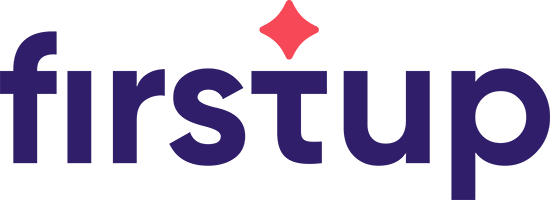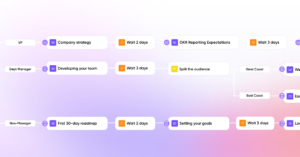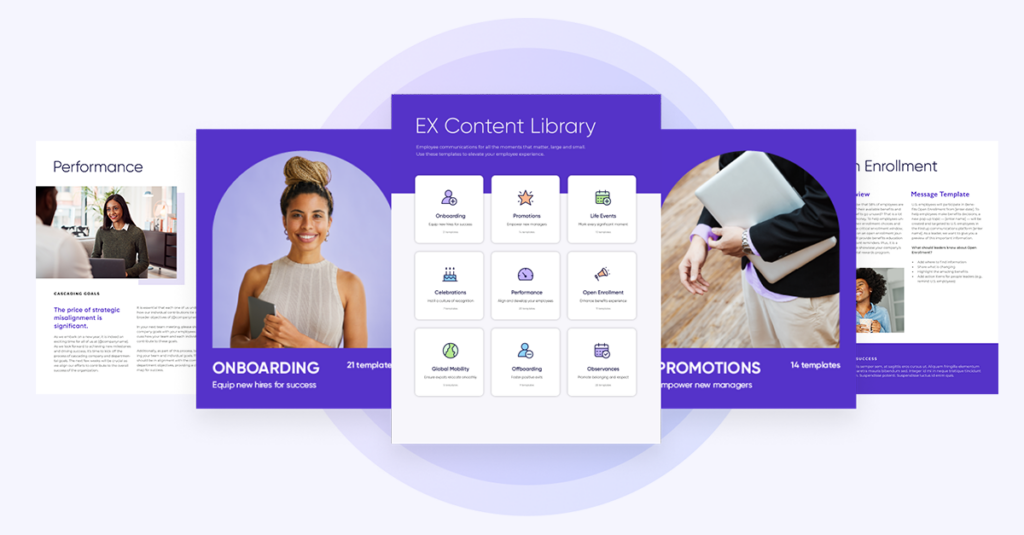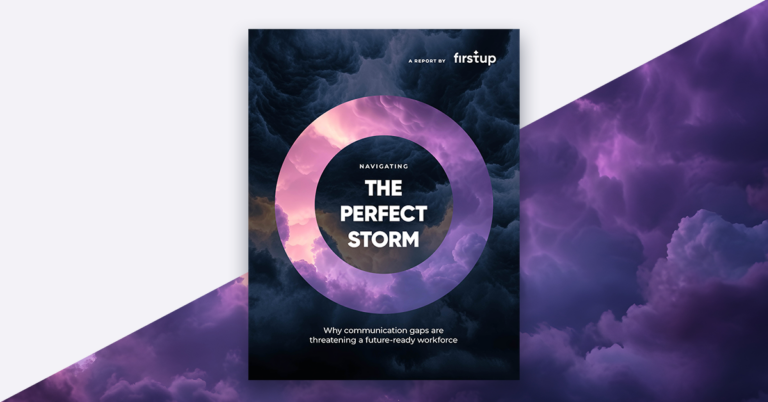Today’s employees are drowning in a sea of corporate content—endless emails, Slack channels, training manuals, and learning guides, HR forms, company newsletters, and corporate mission statements. Unfortunately for employers, the vast majority of internal communications content fails to engage or motivate employees. In contrast to the dynamic, visual, and interactive content employees consume and share online, most corporate content is hyper-traditional, static, and sadly, forgettable. It’s no surprise that Gallup recently found that 70% of employees are not actively engaged at work. Faced with growing workforce disengagement and having to compete against Instagram, Twitter, and Netflix for employees’ attention, internal communications teams are understandably stressed and seeking new and more effective ways to connect with their employees.
To paraphrase Steve Jobs, organizations need to “think different” about how they communicate with and create content for today’s digital natives. If you are an internal comms professional and struggling to connect with your employees, here are three sure-fire content strategies to boost employee engagement.
1. Make It Visual
Our brain is hardwired to understand visuals better than text. People process visuals 60,000 times faster than text and retain 80% of what they see versus only 20% of what they read. What’s more, 65% of your employees are visual learners and will respond better to more complicated topics like training and learning and development if they are presented in a visual manner.
One of the most effective ways to get your message across is to use video content. A recent report conducted by Melcrum suggests that 93% of professionals from the internal communication industry believe that video is an essential tool. Employees love videos too and are four times more likely to share video content than text-based information, according to Firstup’s Comms Effectiveness Survey. Here’s a great example of how LinkedIn used an animated video created by Visually, ScribbleLive’s content creation service, to help educate employees and recruiters on why and how people change jobs.
Another effective way to incorporate visuals into your internal comms strategy is to create infographics. By activating the visual learning parts of our brain, infographics can help deliver messaging that will resonate with and engage your employees. For HR departments, infographics are a great way to communicate data regarding recruiting activities, internal benefits, and wellness programs in a visually interesting and easily understandable manner. According to the Content Marketing Institute, infographics are one of the most popular and effective types of content used by B2B organizations today.
Video, infographics, and animations should be at the top of the list when considering how to communicate key topics that will engage, educate, and entertain your employees.
2. Make It Interactive
Face it, most of your internal comms content is static and boring. So how do you turn a dry corporate survey or a dense HR policy guide into a fun and engaging piece of content? The answer is interactive content. In contrast to static or passive content, interactive content engages employees as active participants: answering questions, making choices, exploring scenarios. Interactive content includes quizzes, assessments, contests, calculators, and interactive eBooks, and whitepapers.
Interactive content is also much more effective at educating an audience than passive content. For example, Demand Metric found that 90% of interactive content users found it to be an effective learning tool versus just 65% of passive content users. A great example of how interactive content can turn an otherwise dry and technical issue into an engaging and participatory experience is the interactive whitepaper Improving Employee Wellness through Legal Benefits that ion interactive, ScribbleLive’s interactive content platform, created for Hyatt Legal Plans, a MetLife company. By incorporating interactive visualizations, quizzes, videos, and guided chapter navigations, Hyatt Legal Plans was able to create an interactive and educational experience that engaged its employees in a way that their previous static content strategy never could.
3. Make It Digestible
We’re living in an age of declining attention spans. According to a study by Microsoft, the average human being now has an attention span of eight seconds! What this means, besides the fact that your employees can pay attention for only as long as a goldfish, is that nobody has the time, inclination, or patience to read through your content. In order to engage today’s distracted thumb-scrolling employees, internal comms teams need to prepare and package their content for easy consumption and shareability.
In addition to creating content that is simple and concise with clickable headlines and clear calls to action, companies should also focus on content types that can be scanned easily and are well suited for social sharing. Some great examples of highly digestible and impactful content types include cinegraphs and short animations.
Download PDF








